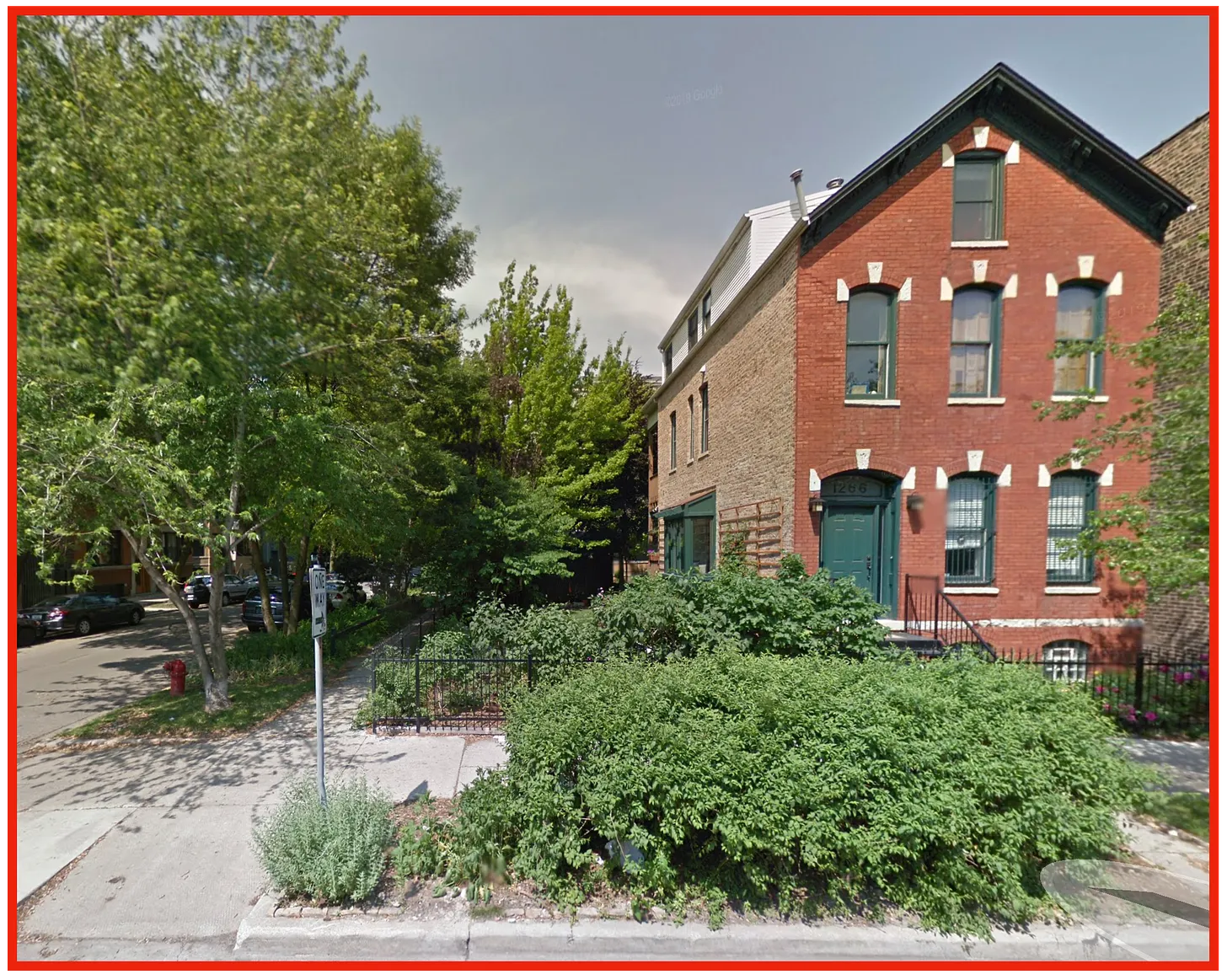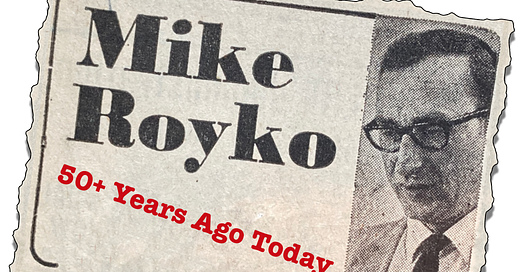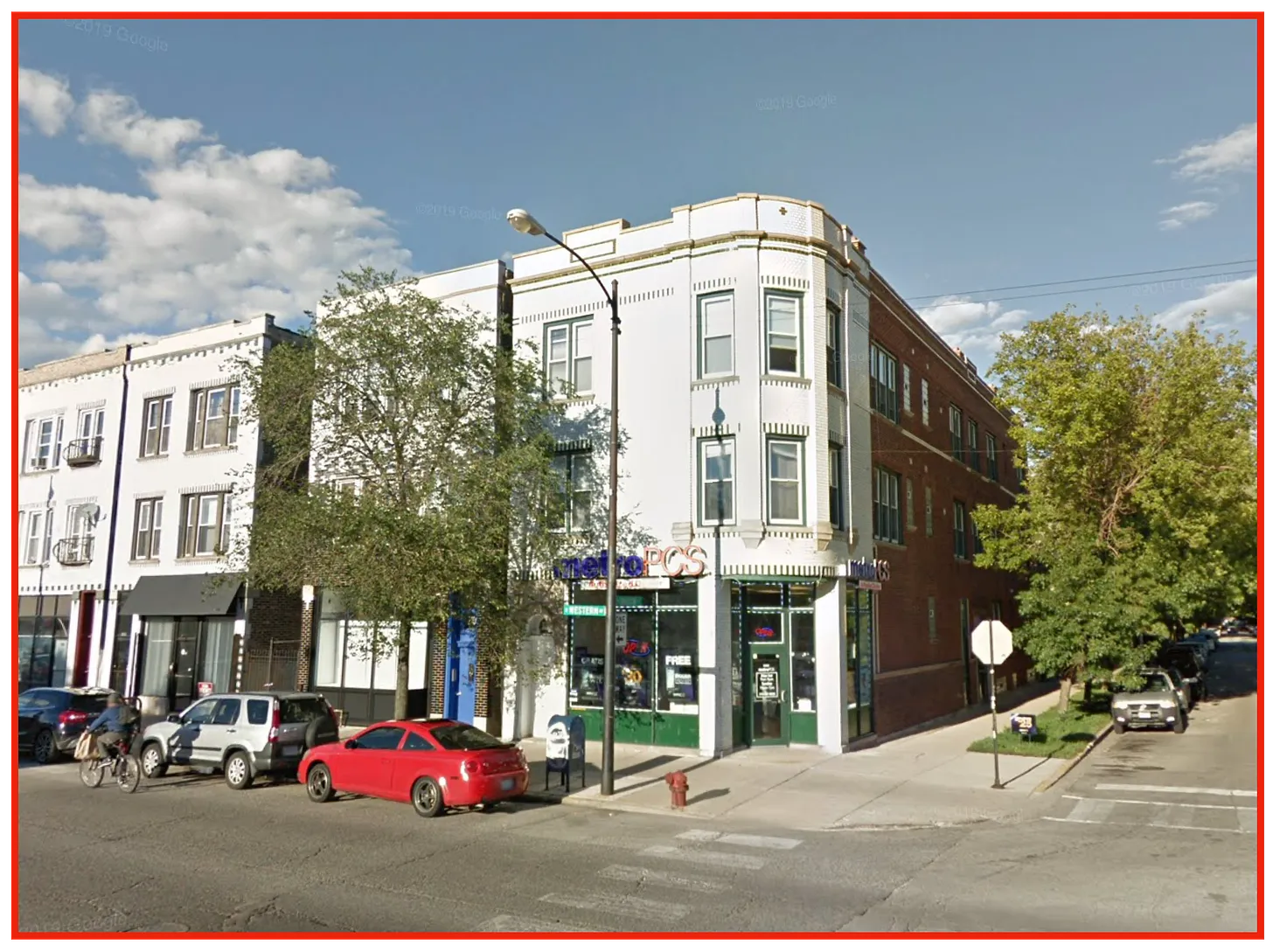Mike Royko 50+/- Years Ago Today: The Hunt for Blue Sky Lounge
An update on where young Mike lived
To access all site contents, click HERE.
Why do we run this separate item, Mike Royko 50+ Years Ago Today? Because Steve Bertolucci, the hero of the serialized novel central to this Substack, lived in a Daily News household—meaning the Bertoluccis subscribed to the Daily News. Back then everybody read the paper, even kids. And if you read the Daily News, you read Mike Royko.
As I finish up the last posts in the High-Rise Man series, I’ve updated the first installment on where Mike lived as a kid—and the mystery of the Blue Sky Lounge. Here’s the new information in a nutshell, so current readers don’t have to go back and nose around to find it. I assume you’re all up nights losing sleep, wondering if the Royko family bar was on Milwaukee, Armitage, or Western. Right? Right?
If you’re new here and would like to start at the beginning, go to The Ascent of Royko.
Where did the Roykos live when Mike was very small?
You may recall that Helen Royko showed up at 3300 W. Schubert for the 1930 census, head of household since she was (temporarily) divorced from Mike Royko Sr. Maybe when the Roykos reunited and welcomed Mike into the world in 1932, they were still on Schubert.
Or maybe they’d moved to another place in the Milwaukee Avenue area, the northwest corner of Potomac and Wolcott—as mentioned in Richard Ciccone’s biography, “Royko: A Life in Print.”

The Roykos were too poor for a phone. Hence they had no phonebook listing. Mike’s sisters have passed away, and oldest son David Royko has no more information to go on. So I was left to guess about the family’s early addresses. But as I continued this series, I tripped over the clipping below from the Daily News. I’d misfiled this clip and completely forgotten about it. It turns out we can pinpoint at least one 1930s address for the reunited Roykos, thanks to Mike Sr. getting mugged on the way home from a party.
So Mike Sr. was out quite late partying on a Sunday night, and ended up at Cook County Hospital in the wee hours. That sounds exactly like the Mike Sr. described in all accounts of Mike Royko’s family. The question is, what was Mike Sr. doing with $17 in his pockets in the middle of the Depression? According to the Bureau of Labor Statistics inflation calculator, that’s $400 in 2024.
While Mike Sr. was out having a good time, Helen and their three kids, including two-year-old Mike, were presumably asleep in a flat at 851 N. Damen. It’s the middle building below.
The Hunt for Blue Sky Lounge
According to Ciccone’s bio, Royko’s family opened the Blue Sky Lounge in 1938—commonly identified as 2122 N. Milwaukee—with Mike Royko Sr.’s cousin Gus. Doug Moe’s biography, “The World of Mike Royko,” puts it in 1935. All accounts, including Mike’s, are that the family lived in a flat upstairs from the bar. Royko called himself “Flat Above A Tavern Youth” for these years.
But the only Blue Sky Lounge in the phonebook that could be the Royko’s place was the Blue Sky Inn, a few blocks away at 2101 N. Western (below). And the 1940 census shows the Roykos living at 2134 N. Milwaukee, just north of the presumed Milwaukee tavern’s location shown above.
The Blue Sky Lounge (or Inn?) ended after Mike Sr. kicked Helen Royko so hard he broke her ribs. But it’s unclear exactly when that happened. Both Royko biographies agree that the family moved to Armitage, right by Salmon P. Chase Grammar School at Point St., probably by the time Mike was in second grade. Doug Moe’s bio includes a photo of the Roykos in front of a building identified as “the second Blue Sky Lounge” on Armitage in 1940. That’s Mike leaning against the building, far right.
Doug Moe didn’t remember any details to explain that caption when I checked with him. But Chicago author Bill Brashler mentions the Royko tavern location as Armitage and Point St. in a terrific 1979 Esquire profile of Mike—and Brashler drove around the neighborhood with Royko. I still hope to get in touch with Brashler and update this post with any new information from him. So far, he’s not responding. The thing is, there is never any Blue Sky Lounge (or Inn, or whatever) listed on Armitage. And while the Roykos were too poor for a regular phone, their bar would have needed one.
Finally, here’s our Blue Sky Lounge update: Veteran Chicago media columnist Robert Feder read The Ascent of Royko and pointed me to a 1993 Royko profile in The Washington Post by media critic Howard Kurtz—thanks Rob! Kurtz makes at least one definite error in recounting Royko’s history, but he mentions a Blue Sky Lounge on Armitage Avenue and most importantly, he gives an address: 2643 W. Armitage. That’s it, the brick two-story on the left.
Is this the same building that young Mike is leaning against in that 1940 picture? Could be, though it’s a bit too murky to say for sure. Kurtz writes his profile as if he started the day with Royko at the Goat, then drove around the old neighborhood with him before ending up at Royko’s home at that time in Winnetka. And this building is in exactly the right place, across the street from Point St.
There’s no Blue Sky Lounge on Armitage per the phonebook, ever, and Mike Royko often talked about the ever-important tavern phone. So all I can say is, we’ll have to embrace the mystery for now.
In case you missed any previous posts in this series, here are the links:
Part One: The Ascent of Royko
We trace Mike’s hardscrabble early life through the homes he lived in—and the life, in those homes, that led Royko to mock wealthy lakefront Chicagoans in 15 columns spanning almost 20 years. Mike called this new species of well-to-do Chicagoans “High-Rise Man.” Then, in 1981, he surprised everyone by moving to 3300 N. Lake Shore Drive.
Part Two: The Birth of High-Rise Man
Mike discovers a new species of privileged Chicagoans. Columns ensue, including two all-time Royko classics.
Part Three: Mike and Walter and Insults, Oh My!
Mike’s High-Rise Man column on November 5, 1981 slams headlong into his lengthy feud with top Chicago TV news anchor and commentator Walter Jacobson. So first, a look at Walter, and Mike and Walter.
Part Four: November 5, 1981
Mike’s November 5, 1981 column appears to be a very hot take on the independent lakefront liberals of the 43rd Ward, especially Ald. Marty Oberman and his constituent Walter Jacobson. But it’s really about Richard M. Daley’s successful 1980 campaign to move up from state senator to Cook County State’s Attorney. We’ll give you a backgrounder on the politics and examine the sizzling November 5 column. Careful not to burn your fingers.
Part Five: The House on Sioux Leads to Lake Shore Drive
Mike and his first wife Carol moved their young family into a darling house in Edgebrook. That house encapsulates why Mike would always identify with poor and working class Chicagoans, and scoff at wealthy lakefront residents as “High-Rise Man.” Mike’s departure from Sioux Avenue shows us what always made him tick—and finally drove him to a big condo on Lake Shore Drive.
Part Six: Walter Strikes Back
Walter Jacobson struck back soon after Mike’s November 5, 1981 column, instigating a monumental front-page Royko High-Rise Man column on November 22 that doubles as a 1980s Chicago time capsule—and essentially ended the High-Rise Man concept. Here, we prepare for that moment of truth by examining how the paths of Mike and Walter crossed and re-crossed through the middle decades of the 20th century—and then observe their biggest collision.
Part Seven: The Last High-Rise Man [Coming]
Because there’s so much fascinating material to cover in Part Six leading up to Mike’s November 22, 1981 column answering Walter Jacobson, that 1980s time capsule of a column gets its own post here.
High-Rise Man Addendum: Bill Granger Weighs In [Coming]
A few months after Mike and Walter’s dust-up, Tribune columnist Bill Granger revisited the issue in his own indelible way. To Granger, the question is: Does your past world disappear? You know what Faulkner said. Granger covers this age-old debate from a Chicago perspective.
By the way, this feature is no substitute for reading Mike’s full columns. He’s best appreciated in the clear, concise, unbroken original version. Our purpose here is to give you some good quotes from the original columns, plus the historic and pop culture context that Mike’s original readers brought to his work. Sometimes you can’t get the inside jokes if you don’t know the references. Plus, many iconic columns didn’t make it into the collections, so unless you dive into microfilm, there’s riveting work covered here you will never read elsewhere.
If you don’t own any of Mike’s books, maybe start with “One More Time,” a selection covering Mike’s entire career which includes a foreword by Studs Terkel and commentaries by Lois Wille.












